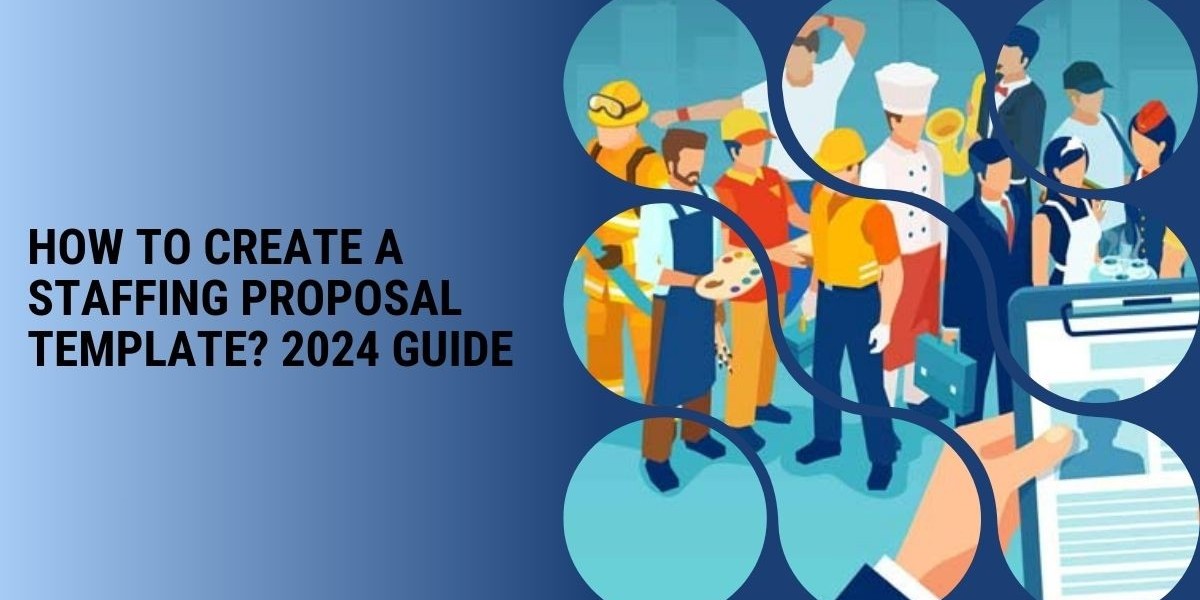What is a Staffing Proposal?
A staffing proposal is a formal written document that indicates the services and strategies a staffing agency or organization will pursue in order to meet the employment needs of a client. It serves as a recruitment roadmap that outlines how the staffing agency plans to source, screen, and place candidates according to the requirements of a client.
Key Components of a Staffing Proposal
- Executive Summary: This section provides you with an overview of your proposal, highlighting the key points and attractions of your staffing services. It hence aims to lead the entire content of this document.
- Company Overview: You will introduce the staffing agency where you would be basing your business. This encompasses your mission statement, vision, and company values. You could provide information on your team, experience, and possibly any unique selling propositions.
- Client Needs Assessment: This chapter defines and discusses the particular needs of the client. It shows you understand their problems and what they want, making your proposal relevant.
- Proposed Staffing Solutions: This is the heart of your proposal. Here, you outline strategies on candidate sourcing, the kinds of positions to be filled, and methodologies you will use throughout the hiring process.
- Pricing and Terms: Do your pricing structure as you will, making sure you place every fee, payment terms, and any extra cost structures. Transparency always helps foster trust.
- Timeline: Give the timeline for the process of recruitment to be undertaken, outlining every single step, from initial consultancy to where the person would eventually be placed. This keeps client expectations under check.
- Conclusion and Call to Action: Summarize the key points of the proposal, urging the client to act, either by scheduling another meeting or signing a contract in his or her office.
How Do You Pitch a Staffing Proposal?
Presentation of Staffing Proposal Pitching a staffing proposal is very crucial for the securing of new clients and long-lasting relationships. Here are some fundamental steps you should consider when preparing to pitch your proposal:
1. Understand Your Audience
Pitching your staffing proposal demands that you know who you are presenting to. Research the client's business, industry, and their specific needs for staffing. Adapt your proposal to the specific needs and challenges they are facing to show your familiarity with your environment.
2. Develop a Compelling Story
Stories are relatable. Present your staffing proposal as a story showcasing the struggles of your client and how your services can solve them. Use case studies or success stories from previous clients to show how your approach works.
3. Highlight the Benefits
Instead of just listing services, put emphasis on what the benefits of your staffing solution will be to the client. Talk about how your agency is going to save them time, lessen the turnover rates, and increase their productivity through the right kind of candidates.
4. Be Prepared for Questions
Prepare for questions you are likely to be asked and draft clear, concise answers as proof of knowledge in the services that you offer. Some typical questions include: a recruitment process, how you ensure the quality of candidates, and contingency plans, among others.
5. Use Visual Aids
There must be some graphic presentation involved in the presentation, such as charts, graphs, and slides. For the purpose of being able to effectively illustrate complex information and to keep the focus of listeners on your messages, visual aids prove very useful.
5 Tips for Creating Standout Staffing Proposals
It's more than just a template. Here are five steps that will make you create a proposal: standing out and securing deals:
1. Personalize Your Proposal
Personalization is key. Address the client's specific pain points and needs directly within your proposal. Use their company name, speak about industry challenges facing them, and propose tailored solutions that resonate with their objectives.
2. Keep It Clear and Concise
While it is important to be as comprehensive as possible, clarity is key. Using simple language, bullet points, and headings breaks up the text and makes the proposal easy to navigate. Be as concise as possible while still including all critical details.
3. Incorporate Data and Metrics
Support your proposals with facts and metrics that validate your claims. For example, if you could demonstrate how your staffing solutions had led to a certain percentage reduction in turnover rates for similar companies, it would give more merit and credence to your proposal.
4. Include Testimonials and Case Studies
Testimonials from fulfilled clients or case studies that put your success forward can easily add much-needed credibility to your proposal. They give you social proof and may, therefore, ease the minds of your client.
5. Use Professional Design Elements
The visual appeal is important in your proposal. Therefore, use clean, professional designs that represent the brand identity. All these texts, colors, and images must be consistent. It makes your proposal visually attractive and easy to read.
How to Write a Correct Staffing Proposal
Crafting the right staffing proposal requires an orderly approach toward clarity and effectiveness, especially through instruments like Super Proposal Staffing proposal templates. Here's a step-by-step process to help you craft a comprehensive staffing proposal:
Step 1: Research and Understand Client Needs
Begin by researching the client's company, industry, and particular staffing needs. Interview or survey them if that's necessary in order to gain their input on problems and what they expect.
Step 2: Draft the Proposal Structure
Then jot down all the key ingredients of your staffing proposal, such as the introduction, client needs assessment, recruitment strategy, candidate qualification, timeline, pricing structure, and conclusion. This will give you a clear roadmap for your writing.
Step 3: Write the Introduction
In the introduction, briefly overview your organization, its mission, and your values. You can also mention your expertise in staffing in the introduction. Then clearly state the purpose of the proposal and express how excited you are at the opportunity to work with the client.
Step 4: Conduct a Needs Assessment
In the client needs assessment section, summarize clearly the specific staffing challenges the client is facing. Use the insights you have gathered from doing your research to demonstrate your understanding of your client's situation and the urgency of their need.
Step 5: Outline Your Recruitment Strategy
Describe your strategy to source, screen, and select candidates. Share with the reader your sources of recruitment, the processes you have in place to evaluate candidates, and any technology or tools you are using to make this process easier.
Step 6: Highlight Candidate Qualifications
Provide an overview of the kind of candidates that you would source for the client. Highlight qualifications, abilities, and experience that qualify these candidates for the jobs in question. If possible, elaborate on profiles of the previous successful placements to reinforce your claims.
Step 7: Create a Timeline
Develop a timeline of milestones with deadlines in the recruitment process. This will help your client understand what is happening at each particular point in time and will be a demonstration that you know how to run the process effectively.
Step 8: Outline the Pricing Structure
Outline your pricing structure, including any fees, commissions, or other additional costs associated with the provision of your staffing services. Being transparent about price builds significantly on trust and reduces potential misunderstandings late on.
Step 9: Conclude with a Strong Summary
Finally, summarize all your proposal's important points and renew your commitment to meeting their staffing needs. Conclude by expressing the eagerness to work and providing permission for them to contact you if any questions or feedback is required.
Step 10: Review and Revise
Then, proofread your proposal to ensure it is clear, coherent, and accurate. Edit the grammar and punctuation errors and make sure that the document flows in a logical way from section to section.
Conclusion
Making a staffing proposal template is one of the critical steps to securing staffing opportunities and finding lasting relationships with clients. Understanding what a staffing proposal is all about, mastering the art of pitching, and following best practices in writing and formatting will help you craft truly eye-grabbing proposals that showcase expertise and commitment toward meeting the needs of your client. This means you'll have the right approach to your staffing proposals so that it will both inform and inspire confidence in your ability to deliver top-notch staffing solutions.



